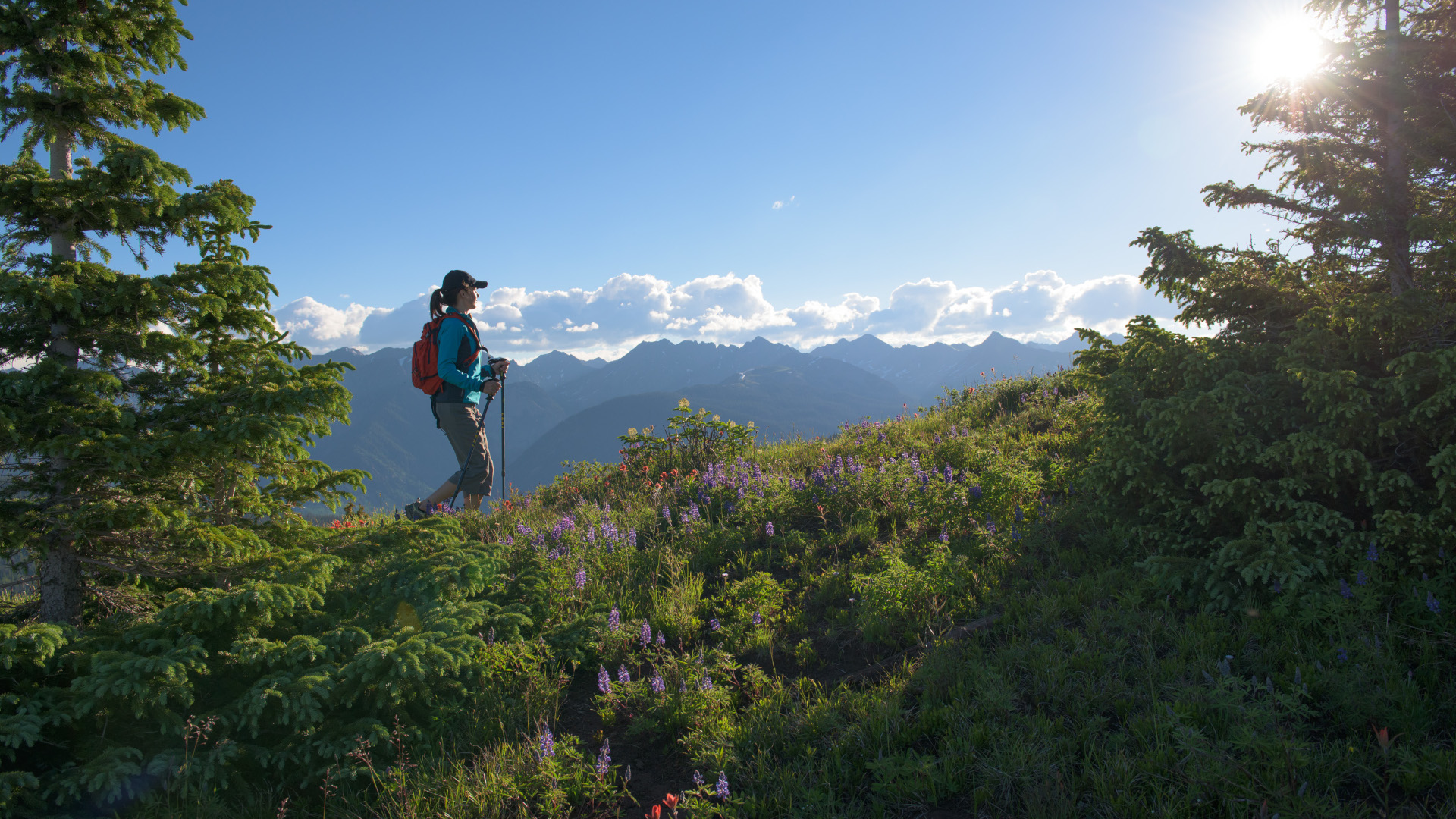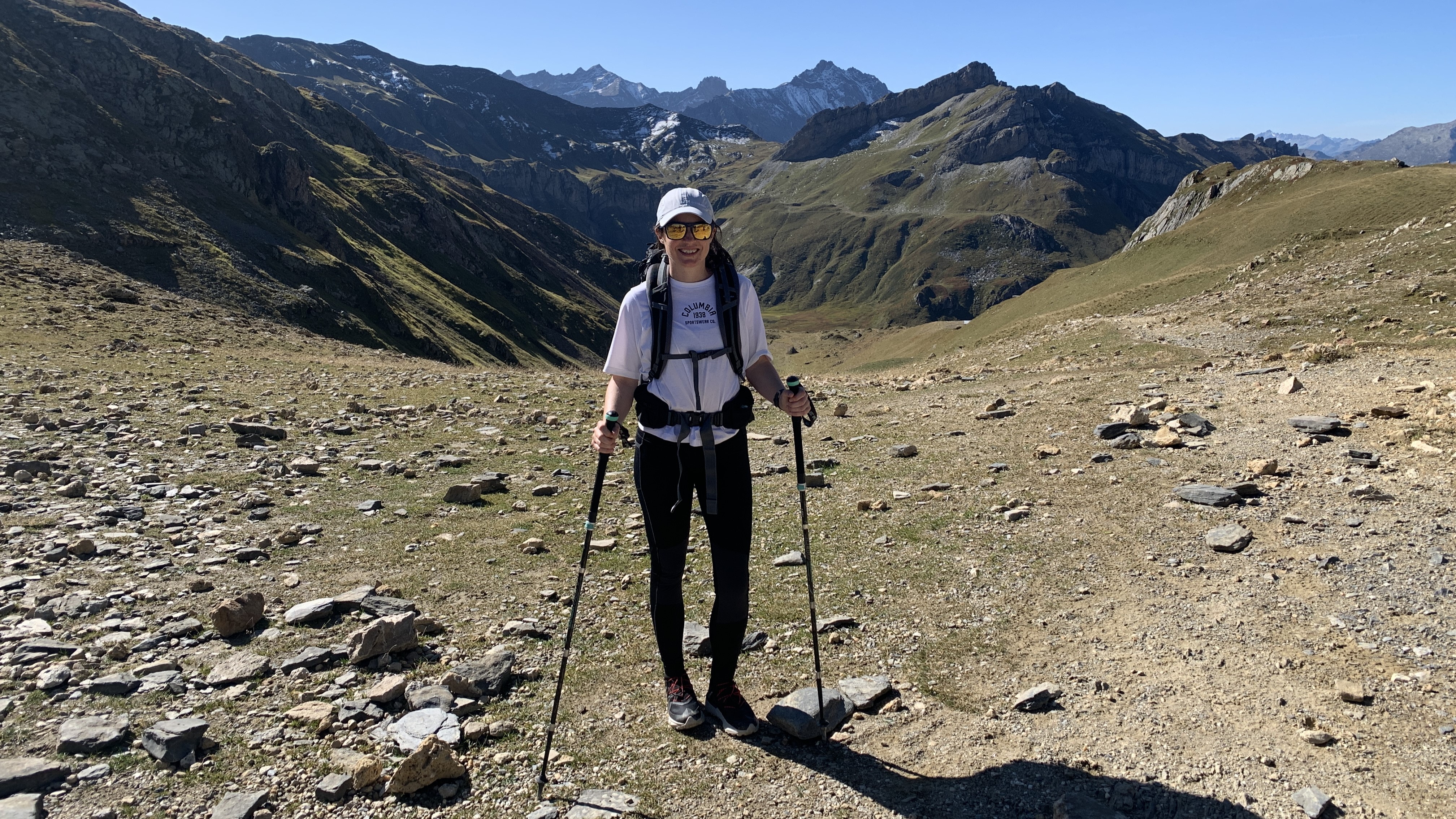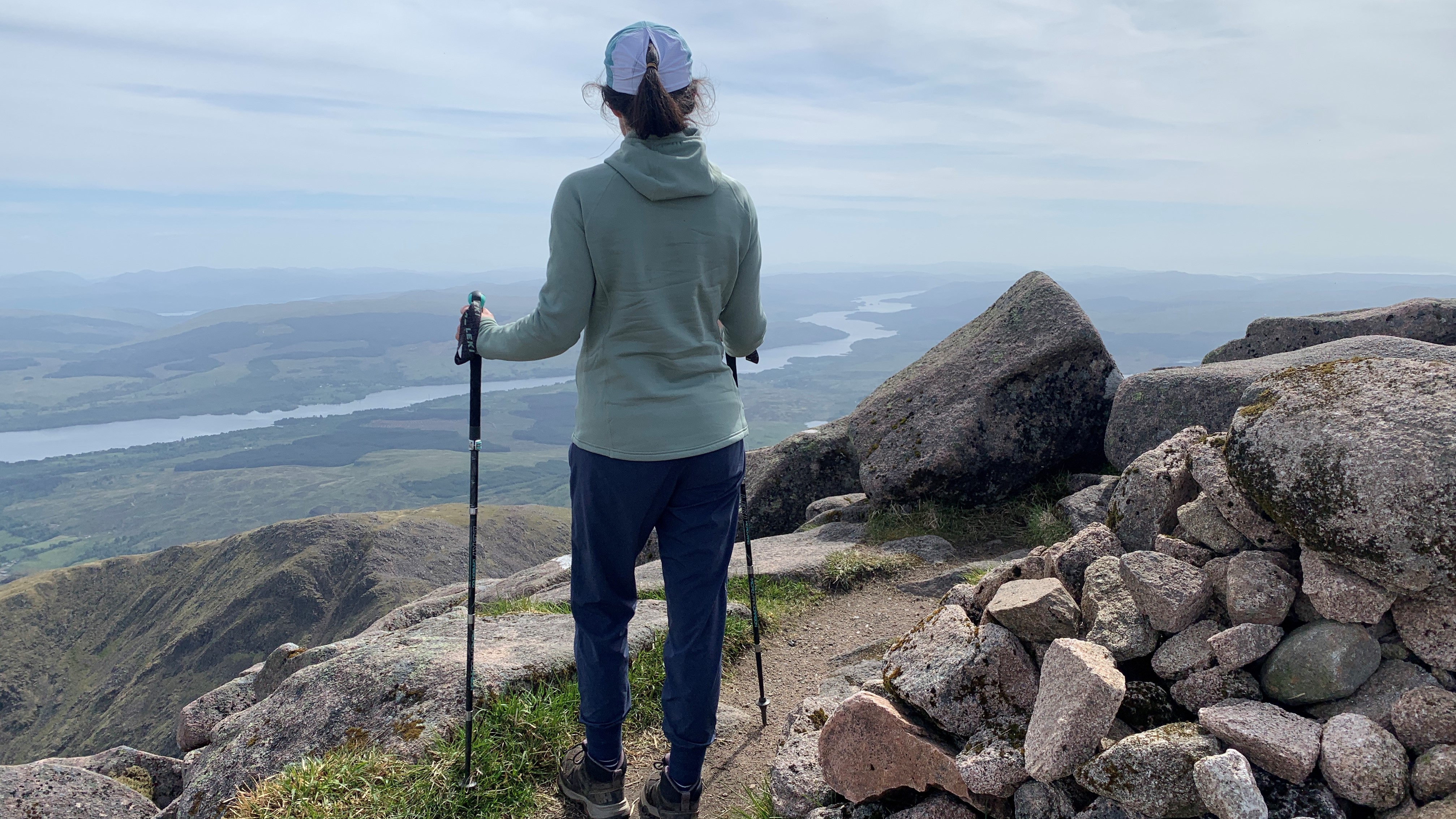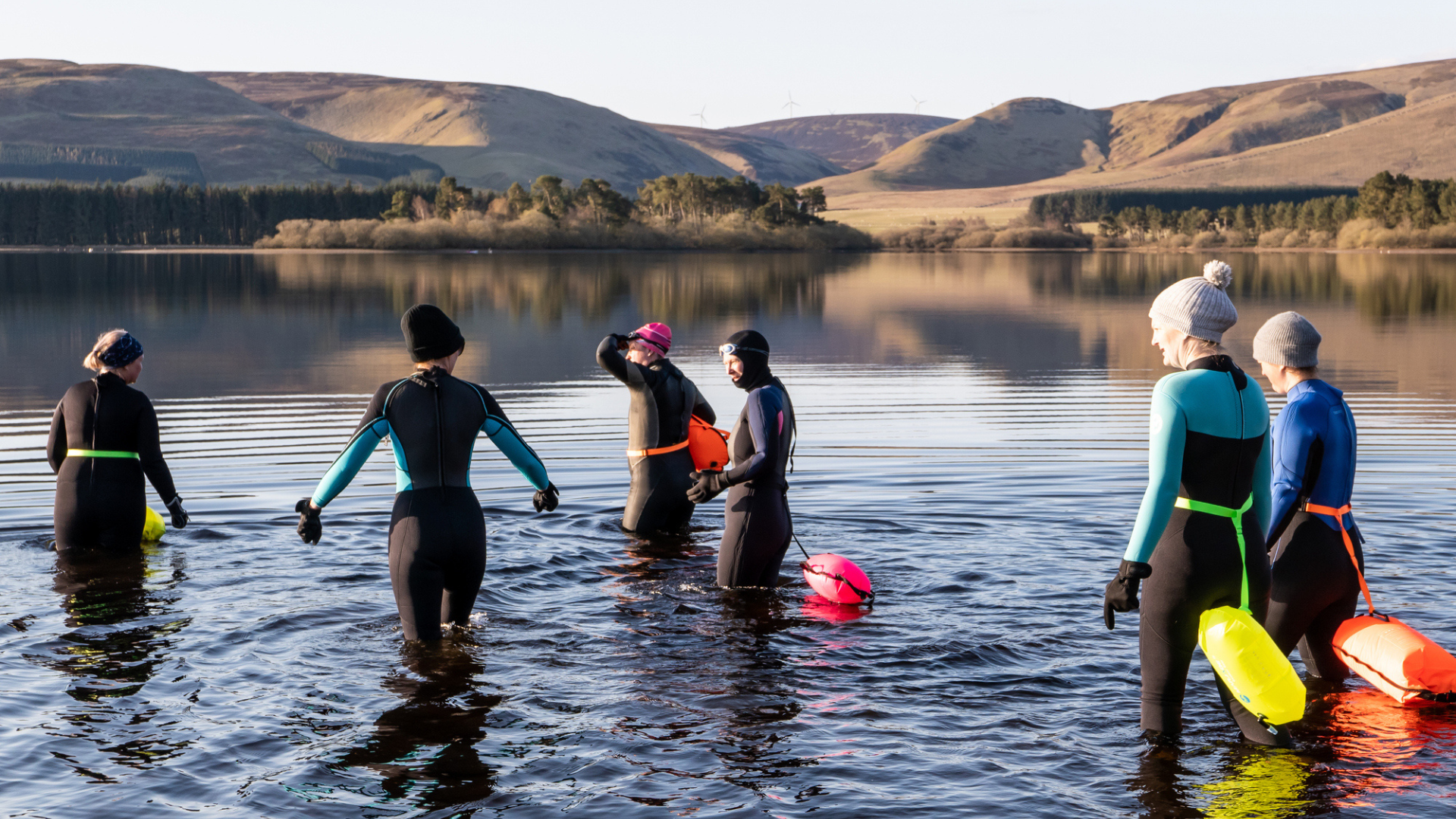I hike at least 50 km every month – here's why I think my trekking poles are the most important piece of gear I own
You might think trekking poles are just for elderly hikers, but they can help you pick up your speed, move more efficiently and prevent tumbles on the trail

In general, I find these really comfortable, especially when I compare them to some of my yoga leggings which are sometimes so compressive they give me indigestion
(Image credit: Manon Guenot)Anyone who knows me knows that I’m happiest when I’m on the trail in my hiking boots. I first fell in love with hiking on a three-day trek across Lapland when I was a teenager. My first job out of college took me to Vermont, where I roamed the Green Mountains in the summer, then I graduated on to the towering Rocky Mountains during my 11 years living in Vail, Colorado. Four years ago, I moved home to Scotland and nowadays you can usually find me on the West Highland Way, up a Munro or if I’m lucky, over in the Alps.
For a long time, it never occurred to me to use trekking poles on my hikes other than during steep descents from Colorado 14ers, where I might use a single ski pole to take the strain off my knees and navigate boulder fields. I didn’t necessarily think they weren’t worthwhile, but I suppose the only people I saw using them were old – often around town for that matter – and since I wasn’t old, I didn’t think to try them.
Fast forward and now I’m 42 which still isn’t old, but I tore my ACL skiing seven years ago and after two knee surgeries to build me a new one, it was obvious I needed to hike with poles. Even though my knee is rehabbed now and I can happily hike, scramble and fastpack in high altitude terrain, usually to the tune of at least 50 km of hiking a month, I still swear by my trekking poles.

What are trekking poles?
Trekking poles typically come as a pair and are essentially two walking sticks intended for hiking. They look a lot like ski poles and usually have either a cork or foam grip handle, wrist straps and are retractable or foldable so that they can be packed away in your backpack when you’re not using them. Trekking poles are made using either cheaper aluminum or carbon fiber, which is lighter and more expensive.
Benefits of using trekking poles
Because I first started hiking with poles when I was recovering from knee surgery, I mostly wanted them to help me with stability, and to take some weight off my legs, particularly on my descents.
Though there are times when I decide the terrain is tricky enough that I need to pack them away and use my hands and feet to scramble, I usually find my poles are excellent tools for keeping me balanced. This isn’t to say that I couldn’t balance without them, but it does mean I can keep my pace up when the ground beneath my feet gets rough.
As for keeping the weight off my knees, I got my poles so that I could bear more weight with my upper body on the downhills, which put notoriously more strain on knees, but as I regained my fitness I also started to suspect that my poles were helping me power through the uphills. These suspicions were cemented recently when I undertook a fairly short but horrendously steep hike and forgot my poles – I thought perhaps I’d lost a lot of fitness having had a few colds and injuries this spring. But when I went back the next week with my poles, it felt much easier again.
Advnture Newsletter
All the latest inspiration, tips and guides to help you plan your next Advnture!

Of course, this could all be placebo effect, I’m aware, but there are a few small studies suggesting that walking and running with poles does have some real benefit. A 2019 study published in the European Journal of Applied Physiology found that using poles is only slightly more economical (but more economical nonetheless) than walking without poles, and that the Rate of Perceived Exertion goes down with pole use, which staves off feelings of fatigue. A 2022 study in the International Journal of Sports Physiology and Performance found that athletes completed steep uphill maximal efforts faster when they used poles.
Of course, speed may not be your primary goal as a hiker, but the research does suggest that you’ll be more efficient if you choose to use poles, and that means you can hiker for longer and feel happier while you do it. If you need more persuading, my colleague Alex Foxfield has also written about other reasons you need trekking poles, such as to increase safety during river crossings and when hiking in deep snow.

Which trekking poles are best?
Even though I’m obviously a champion for using trekking poles, I feel it’s important to mention that they’re a personal choice. Not everyone likes walking with things in their hands, but if the only reason you aren’t trying them is because you think they’re for old people, I really think it’s worth borrowing or renting a pair.
I’ve been hiking with Leki poles for about the last six years and think they’re excellent quality as well as being light and packable. The lightest pair I own are the Leki Micro Trail Vario which can be used for both hiking and running and I really like these for active travel. The Leki Cross Trail Lite Carbon are a bit cheaper and not that much heavier but still high performers.
If the price of those makes you balk, I get it. I tested out the Cascade Mountain Tech Carbon Fiber Quick Lock Trekking Poles with Cork Grip for Advnture last year, and even though they are heavier and a bit bulkier than what I’m used to, they’re sturdy and a come in at a very good price.
If you’re keen on a cork grip and want something between the budget-friendly Cascade Mountains and the high-end Lekis, I had a shot of my colleague Pat Kinsella’s Black Diamond Trail Cork Trekking Poles last fall when we were hut hiking in the Alps and think they strike a good balance between quality and price.
Julia Clarke is a staff writer for Advnture.com and the author of the book Restorative Yoga for Beginners. She loves to explore mountains on foot, bike, skis and belay and then recover on the the yoga mat. Julia graduated with a degree in journalism in 2004 and spent eight years working as a radio presenter in Kansas City, Vermont, Boston and New York City before discovering the joys of the Rocky Mountains. She then detoured west to Colorado and enjoyed 11 years teaching yoga in Vail before returning to her hometown of Glasgow, Scotland in 2020 to focus on family and writing.

